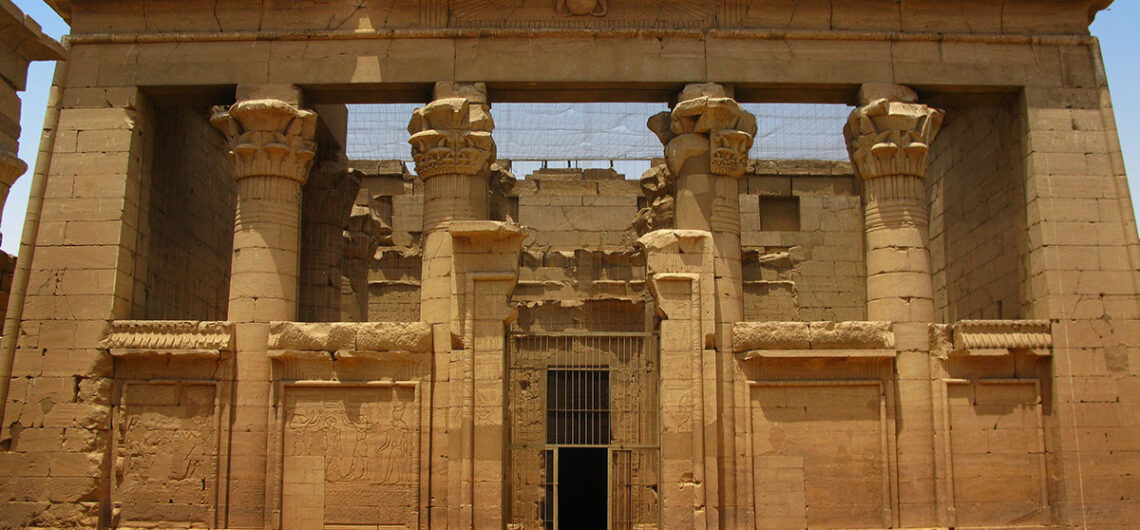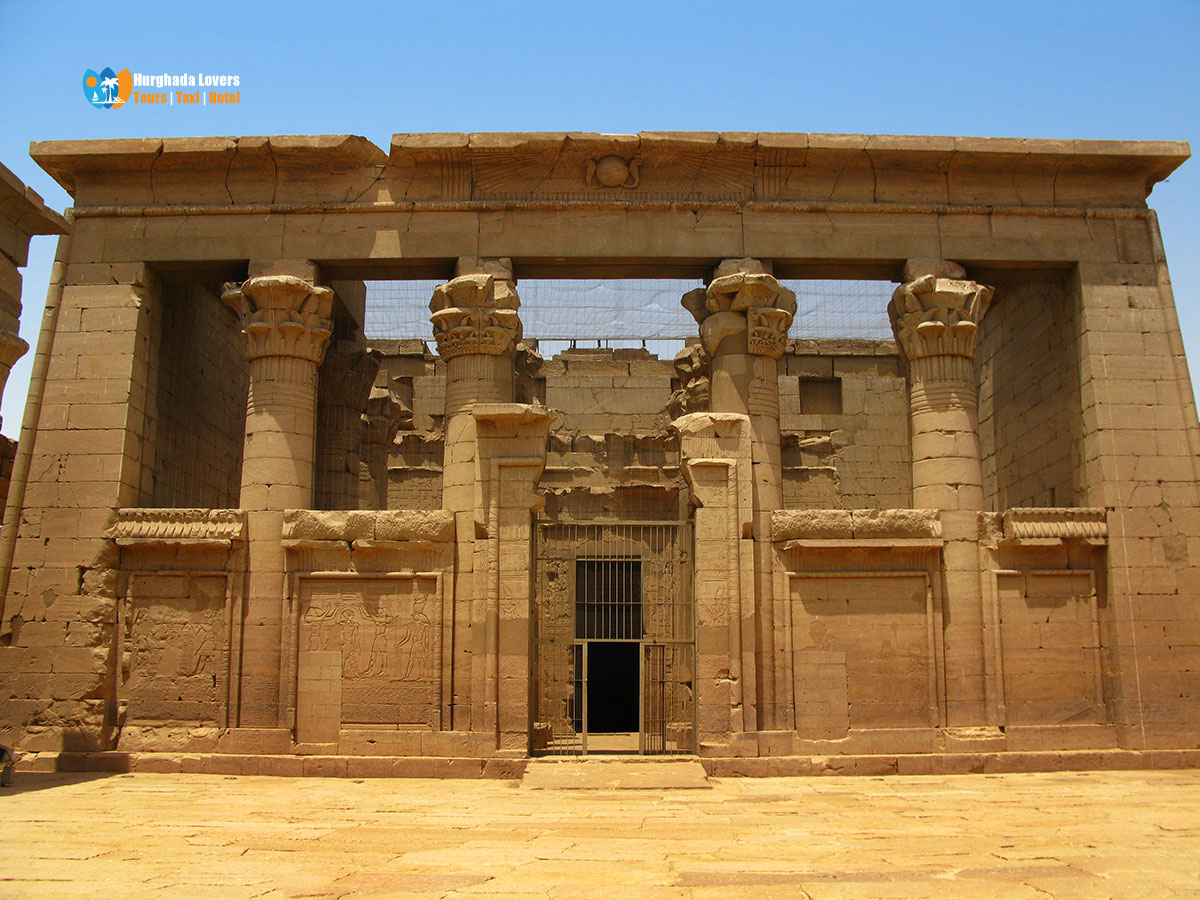The Pharaonic Temple of Kalabsha is the story of the construction of the most important Pharaonic Temples in Aswan in ancient Nubia of Ancient Egypt.
Ancient Egypt Facts & The secrets of the construction of the temple dedicated to the God Horus Mandolis, the inner plan and the inscriptions that have been discovered to teach us more about the culture of the Pharaonic civilization & Things to Do in Egypt.
Hurghada lovers Offer Luxury Hurghada to Luxor Tours | El Gouna to Luxor Tours | Makadi bay to Luxor Tours | Sahl Hasheesh to Luxor Tours | Soma bay to Luxor Tours.
Kalabsha Temple Aswan Egypt
Date of construction: 30 BC J.-C.
Length: 76 m
Width: 22 m
When was the Kalabsha Temple built?
The temple was built during the reign of the Roman Emperor Augustus.
What are the reasons for the construction of the temple of Kalabsha?
- The worship of the God Mandolis, the sun god of the Nubians, who represents one of the different aspects of the God Horus of the ancient Egyptian pharaohs.
- The cults practiced in this temple were dedicated to an ancient Egyptian pantheon formed by several deities such as the gods Amon Ra, Isis, Osiris, Khnum and Anoris.
What is the importance of the Temple of Kalabsha?
- The second largest temple to be moved from the original place to another place after the great operation of the salvage of the Temple of Abu Simbel.
- The Temple of Kalabsha perfectly represents the amalgam of architectural and artistic designs between ancient Egypt and the Roman Empire.
Facts about kalabsha temple:
- Twice a year, the phenomenon of perpendicular sunshine on the temple’s sanctuary occurs, on February 14 and October 29.
- The temple was submerged under the waters of the Nile after the construction of the High Dam in Aswan, the temple was moved from its location in Lake Nasser to its current site for two years, in 1975 AD with a grant from the Federal Republic of Germany.
- The temple was transformed into a Church in Coptic times.
- Pigs were forbidden to enter or raise pigs inside the temple.
- The temple was built on the destroyed ruins of the temple of King Amenophis III.
- It was once called Karnak of Nubia.
- The temple was moved to the island of Khour Angie in a remote area south of the High Dam of Aswan.
What does the word “kalabasha” mean?
The word Kalabsha in the ancient Egyptian language means Telmes and the name was pronounced in Greco-Roman times Talmis.
Stages of the construction of the temple:
- King Thutmosis III built a small funerary temple.
- King Amenophis II completed the entire temple.
- The kings of the Ptolemaic dynasty built the columns of the Great Hall.
- Emperor Augustus completely rebuilt the temple in its current form.
- The Roman Emperor Gaius made drawings and inscriptions on the lintel of the door of the main entrance.
Interior plan of the temple of Kalabsha:
This temple built with sandstone blocks is in a unique location of Ancient Nubia, the temple was moved to the western bank of the Nile and overlooks Lake Nasser in 1970 from its original location, 55 km south of Aswan to build the High Dam.
The temple consists of a large pylon with a large entrance leading you to a courtyard, then a Hypostyle Hall, where you will see Greek inscriptions on its curtain walls, which leads you to the temple’s sanctuary.
Surrounded by 3 corridors, the birth chamber called the Mamisi is to the southwest of the temple, especially Bezes, as well as a chapel to the northeast of the temple.
You’ll also see a two-tower pylon to raise flags over during the celebrations, and then stairs inside each tower that lead you to 3 rooms, so each room is above each other.
The temple houses a large gate at a height of 9.70 m and at the top of the gate are inscriptions of the solar disk and drawings of King Ramses offering offerings to the gods, in addition to pieces of Nubian antiquities from the Ptolemaic chapel, the temple of Beit al-Wali and inscriptions showing victories over the Nubians, Ethiopians, Asians and Libyans.
You will also see inscriptions on the hills of King Ramses II during the wars and military battles he was fighting, and the temple of Kalabsha can be reached by taxi or boat depending on the water level of the Nile at the time.
Other temples near Kalabsha Temple on the same island:
Temple of Beit al-Wali:
Built during the reign of King Ramses II, it consists of an open courtyard, a sanctuary, and a rocky hall. On its walls are scenes depicting Ramses II receiving goods that his generals brought back from Africa such as live animals such as the giraffe, monkeys and cows as well as myrrh, luxury incense burned during worship in the sanctuaries of ancient Egyptian temples. At the level of the temple sanctuary there are polychrome scenes of Ramses offering several important deities such as Khnum, Satet, Anoukis, Selket, Neith and before all the gods their king Amon Ra.
Temple of Jarf Hussein:
The temple was built during the reign of King Ramses II.
Chapelle de Karitassi:
Built in Greco-Roman times on 25 square feet, the chapel was dedicated to the goddess Hathor as the shape of the capitals of its columns are of Hathoric style. The chapel was restored after being moved in 1963.
The chapelle of the Nubian God Dodon:
It is a chapel engraved in the rock formed by a courtyard with granit columns decorated with pharaonic inscriptions.
Open Museum of Kalabsha:
The museum contains:
- Painting from the time of King Sethi I
- Granit stella of King Psametic II.
- Prehistoric rock engravings 3000 – 5000 BC J.-C.
The address of the site:
Aswan, Lower Nubia, Egypt
Dates of visit of the temple of Kalabsha:
Sunday 7h00 – 17h00
Monday 7:00 -17:00
Tuesday 7:00 -17:00
Wednesday 7:00 -17:00
Thursday 7:00 -17:00
Friday7:00 – 17:00
Saturday 7:00 – 17: 00
Ticket prices for the temple of Kalabcha:
Egyptian entrance ticket price = 10 Egyptian pounds
The price of the entrance ticket for the Egyptian student = 5 Egyptian pounds
Entrance ticket price for foreign tourists = 60 Egyptian pounds
Entrance ticket price for a foreign student = 30 Egyptian pounds
Author & Writer The Sphinx of Giza: Tamer Ahmed Abd elfatah Yousif | Tourism Expert | Best Tour Operator in Hurghada
Kalabsha Temple Aswan Egypt | Story of the construction of the most important Pharaonic temples in ancient Nubia.


